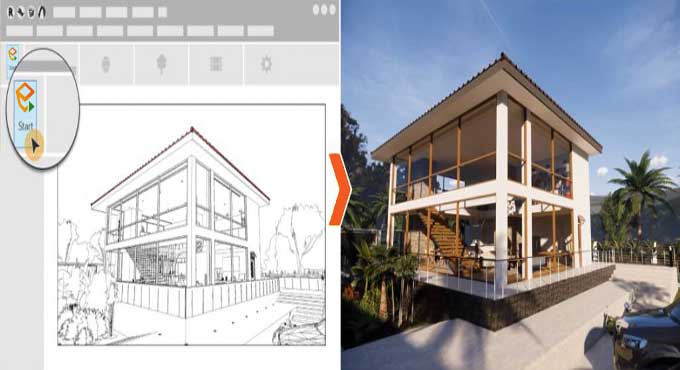The most common Problems encountered in 3D Rendering & its Solutions

Designers and architects who make their living out of architectural rendering have to pay extremely close attention to every tiny detail in their designs. To wow clients and attract investors, architectural 3D rendering is essential.
Architects can create and sell their ideas using the latest and most powerful 3D rendering software. Designers can use the most advanced technology to make photorealistic renderings of future buildings. Due to the difficulty of this endeavor, mistakes happen.
Wrong Perspective
Problem
A wrong perspective can ruin even the most beautiful 3D render. Your design will not only be presented incorrectly, but you will also make a bad impression as a professional.
Solution
Your wow effect will be lost if you adopt the wrong perspective. There is no easy way to fix this mistake. Be mindful of the camera angle so as not to make such a mistake.
In 3D rendering, perspective plays a crucial role. You can maximize every detail while concealing distractions and imperfections using the right perspective. Furthermore, viewing your visualization from the correct perspective makes it more believable.
Simple Design
Problem
In general, artists do not show more than space with windows, doors, and walls. A client wants more than this. The goal of 3D rendering is to add life to your renderings which are vital to impress your clients.
Solution
A simple fix for this error is to add some basic details such as bookshelves, plants, and furniture to your renders, anything that will make your renders look more authentic. 3D rendering helps them talk to their clients To make artists' ideas more personal.
Texturing
Textures play a crucial role in architectural rendering. You need high-resolution textures if you want to add a human touch to your render. The majority of artists overlook the quality of texture. However, investors and clients are attracted to it.
No matter how real your render may seem, texture quality affects the quality of your entire project. The littlest details matter, and while you need to make each detail look perfect, too much perfection can be a distraction. Whenever needed, add high-definition textures to your design to avoid it looking plastic.
Reflection
All 3D renderings require reflections. The effect of light reflecting from almost every object can be difficult to recreate realistically, even though almost every object reflects light.
If you attempt to recreate glass or mirror surfaces, you will likely get unrealistic renders. Your clients may even consider your renderings to be deceitful, unprofessional, and even sloppy.
Your design looks more realistic with imperfections like dust and scratches since the light is reflected just right in the right place. When rendering a building, using only straight and sharp edges will make your design look unnatural once shadows and reflections add.
Do not Copy
People and scale figures are frequently available for free downloaded sites in 3D rendering, as these details can sometimes work well with your concept if they are angled in the right way.
That is a great way to save time and effort in most cases, but there is a downside to this. To make your render more realistic, you should include people and objects on your own. Too many artists use similar people and objects. As a result, this can be a huge distraction that detracts from your design. The downloaded details will distract your clients from the focal points of your renderings.
To learn more, watch the following video tutorial.
Video Source: Lumion
Final Thoughts
It can be challenging to present a realistic design. Often, designers are so concerned with the details in their designs that they make them look overcrowded with details.
In other cases, deadlines are important, and they use any method necessary to meet them. It is easy to make mistakes when you approach things this way. As it is, 3D rendering has a lot of room for mistakes, and problems do occur every day, just as they do in other professions. It will be easier for you to create an appealing and realistic design if you avoid these mistakes.



